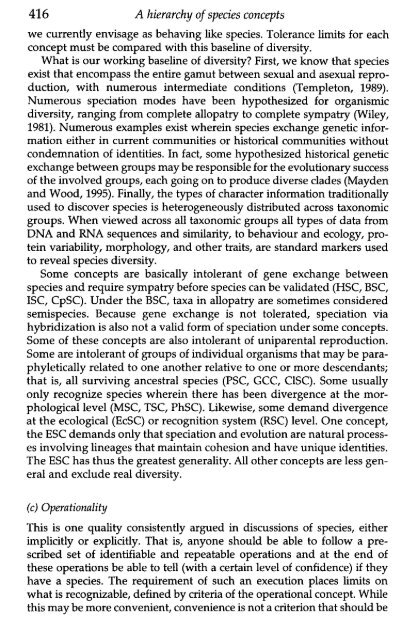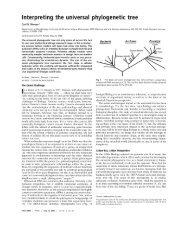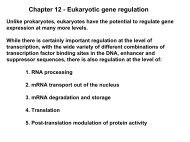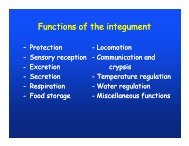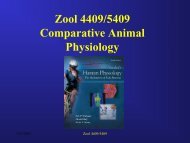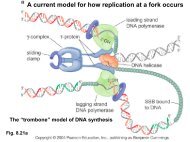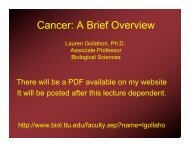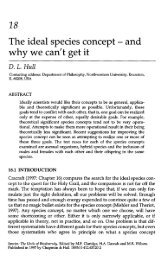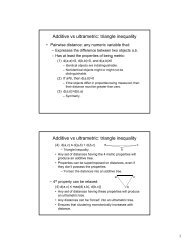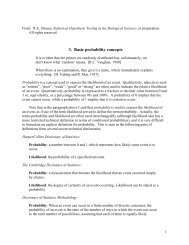Mayden, 1997 - Texas Tech University
Mayden, 1997 - Texas Tech University
Mayden, 1997 - Texas Tech University
You also want an ePaper? Increase the reach of your titles
YUMPU automatically turns print PDFs into web optimized ePapers that Google loves.
416 A hierarchy of species conceptswe currently envisage as behaving like species. Tolerance limits for eachconcept must be compared with this baseline of diversity.What is our working baseline of diversity? First, we know that speciesexist that encompass the entire gamut between sexual and asexual reproduction,with numerous intermediate conditions (Templeton, 1989).Numerous speciation modes have been hypothesized for organismicdiversity, ranging from complete allopatry to complete sympatry (Wiley,1981). Numerous examples exist wherein species exchange genetic informationeither in current communities or historical communities withoutcondemnation of identities. In fact, some hypothesized historical geneticexchange between groups may be responsible for the evolutionary successof the involved groups, each going on to produce diverse clades (<strong>Mayden</strong>and Wood, 1995). Finally, the types of character information traditionallyused to discover species is heterogeneously distributed across taxonomicgroups. When viewed across all taxonomic groups all types of data fromDNA and RNA sequences and similarity, to behaviour and ecology, proteinvariability, morphology, and other traits, are standard markers usedto reveal species diversity.Some concepts are basically intolerant of gene exchange betweenspecies and require sympatry before species can be validated (HSC, BSC,ISC, CpSC). Under the BSC, taxa in allopatry are sometimes consideredsemispecies. Because gene exchange is not tolerated, speciation viahybridization is also not a valid form of speciation under some concepts.Some of these concepts are also intolerant of uniparental reproduction.Some are intolerant of groups of individual organisms that may be paraphyleticallyrelated to one another relative to one or more descendants;that is, all surviving ancestral species (PSC, GCC, CISC). Some usuallyonly recognize species wherein there has been divergence at the morphologicallevel(MSC, TSC, PhSC). Likewise, some demand divergenceat the ecological (EcSC) or recognition system (RSC) level. One concept,the ESC demands only that speciation and evolution are natural processesinvolving lineages that maintain cohesion and have unique identities.The ESC has thus the greatest generality. All other concepts are less generaland exclude real diversity.(c) OperationalityThis is one quality consistently argued in discussions of species, eitherimplicitly or explicitly. That is, anyone should be able to follow a prescribedset of identifiable and repeatable operations and at the end ofthese operations be able to tell (with a certain level of confidence) if theyhave a species. The requirement of such an execution places limits onwhat is recognizable, defined by criteria of the operational concept. Whilethis may be more convenient, convenience is not a criterion that should be


